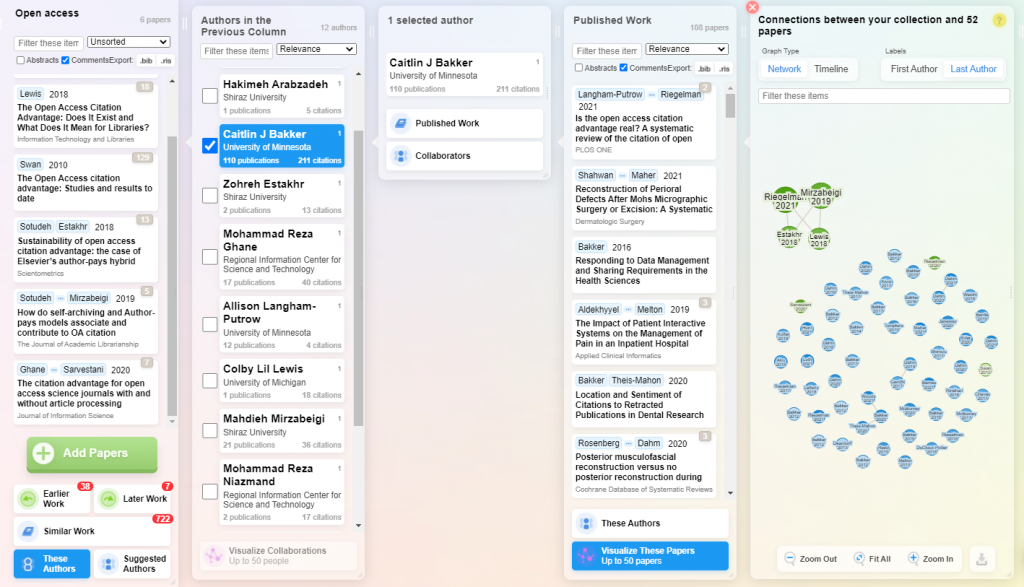ResearchRabbit is a new tool for literature exploration and mapping. As hinted by its name, this tool aims to give you a leg up down the research rabbit hole.
What is ResearchRabbit?
ResearchRabbit is a literature mapping platform that takes one or more relevant seed papers and uses various algorithms to suggest and visualize relevant literature and researchers. The company behind ResearchRabbit had released this platform in beta for a while, and it was fully launched in Aug 2021 for open registration by everyone with an institutional email address.
Get Started with One or More Seed Papers
The ResearchRabbit cascade interface is quite intuitive. To get started, a user needs to add some papers as “seeds” on a project. Then, ResearchRabbit will start generating recommendations for “Similar Work”, “Earlier Work”, “Later Work”, and “Suggested Authors” following a chain of papers that cite each other.
For demonstration, I added six papers to a collection “Open Access” as listed in the first column shown in Figures 1 and 2. To continue the literature discovery, we can click on literally any of the papers, recommended works or authors. Then, further details will unfold automatically in the next column(s):

Figure 1. Explore later work of a collection of papers

Figure 2. Explore authors of the papers in a collection
Visualize Works and Authors on a Graph
One of the most useful features of ResearchRabbit is that it helps to visualize the complex relationships in the literature (up to 50 papers). In the graphs, we can see the connections between papers in the Collection (Green Dots) and paper recommendations (Blue Dots). Furthermore, each line connecting the dots represents a citation relationship between the papers. As of the dots themselves, intensity of the colors is based on recency, and the size of Blue Dots are based on the number of connections they have with the Green Dots. Should we identified any “Blue Dots” useful, we can click on the “+” plus sign to add them to the Collection.
Iterate the Literature Search Process
Literature search requires rounds and rounds of refinements. ResearchRabbit streamlines the process of customizing a search strategy onto one web page. With each added (or removed) paper, ResearchRabbit updates its list of recommended articles, mirroring how the music-streaming platform makes recommendations based on the songs that users add to their playlists. Keeping the search breadcrumb (presented as columns) on one page greatly reduces the labor going back and forth between tabs.
Curate a Collection Through Email Alerts and Collaboration
Based on your collection, ResearchRabbit will also start monitoring all new papers relevant to your topic and sent you weekly email alerts, just in case that there is something new that you probably don’t want to miss. In addition, you can share your collection with others as well as assign editing roles to your collaborators. It’s a good feature to have when working on a collaborative research project.
A Final Note on the “Recommendation” Algorithm
ResearchRabbit is one of the free research tools that emerged on the market in recent years. Previously, we’ve covered several others in our blog. Check them out and see if any of these you found useful.
By far, we know that ResearchRabbit is a tool with an intuitive search interface, and it can recommend relevant works based on your collection. However, unlike similar tools such as InCiteful or ConnectedPapers, the developers of ResearchRabbit, quoting themselves as an early-stage company, haven’t exactly revealed the source of underlying data or the recommendation algorithm, although they say the recommendations rely more on citation network relationships.
– By Jennifer Gu, Library
Views: 5565
Go Back to page Top
- Category:
- Research Tools
Tags: literature mapping, literature search, research rabbit
published December 7, 2021


